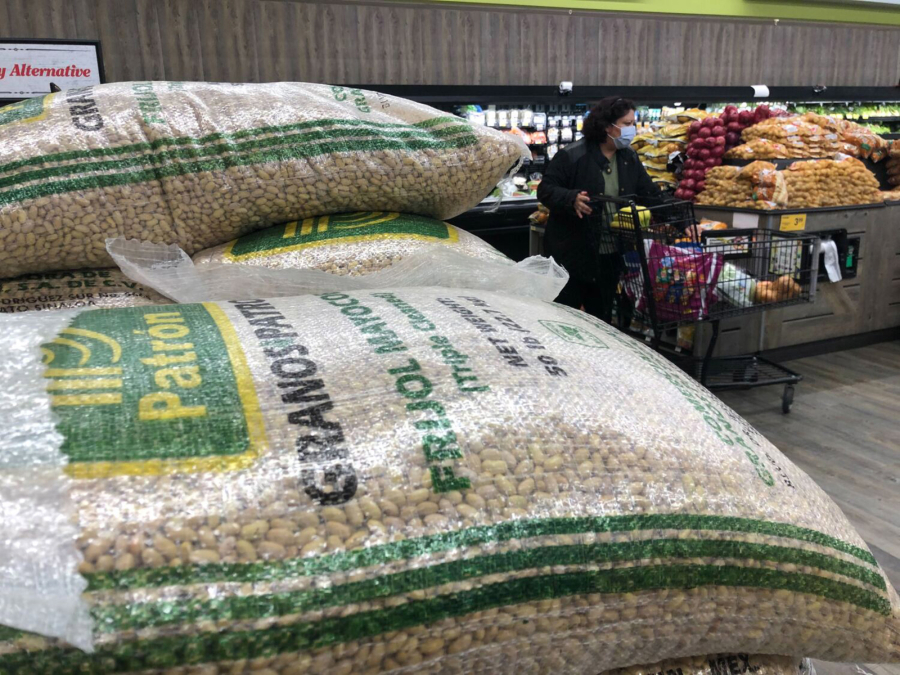As a result of the pandemic, Americans have been spending more on groceries for home cooking and less on going out to eat. But grocery prices have jumped 10.9% in the Los Angeles-Long Beach-Anaheim region over the last year. A combination of factors are to blame, including higher fuel costs, supply chain hiccups and surging labor costs.
Consumer experts and readers — some of whom have made dramatic changes to their shopping habits — offered up these 10 tips for cutting your monthly food bill.
Make a list
Write out your shopping list before you leave the house. This ensures you don’t buy items already in the fridge and helps avoid impulse buying of nonessential foods. “Cut back on snacks and focus on meals,” suggested reader Clayton Schluter of West L.A.
Do your homework
Check out the weekly grocery store circulars, which feature the latest discount prices. The discounts are either the result of deals your grocery store negotiated with suppliers or a price cut to lure you away from the competitor. Plan your weekly meals around these deals. “We really try to make one trip to the store and get creative with the ingredients we have at home,” said reader Lindsay Pond of Sierra Madre.
Sign up for rewards
Join the loyalty membership programs at grocery chains such as Ralphs and Vons to save at least 10% on your shopping costs. Joining means you’ll give up some privacy and open yourself to the risk of identity theft, according to experts. But you can protect yourself by offering minimal information when signing up. For example, don’t include your Social Security number or driver’s license number in your application.
Make some substitutions
When prices for beef, chicken or pork surge, substitute cheaper protein sources such as beans, lentils, eggs or chickpeas, suggests Tobie Stanger, senior editor at Consumer Reports. “Alternative protein sources are good for humans and the planet,” she said.
Use an app
Consider downloading a smartphone app such as Basket, which uses crowd-sourcing to locate the lowest price for the product you are buying. Other apps, such as Ibotta, help you earn cash with every purchase.
Put it on ice
Your freezer can be your best friend. If you find a bargain, fill your freezer with it. Egg whites and most meats can stay preserved in your freezer for up to 12 months. Not sure what you can freeze? Check out this USDA site on freezing food. “You can save a lot on meat, poultry and fish by buying large quantities for relatively low prices,” said Meggan Hill, who operates a popular cooking site, Culinary Hill. “The same day you shop, divide the meat into smaller quantities, such as one-pound packages, and freeze immediately for future meals.”
Skip the name brands
Store brands — also known as generic or private label brands — can be up to 15% cheaper than the national brands and are often produced by the same company. Mel Martinez, a reader from Los Angeles, has been “making a more conscious effort to buy store brand/generic items. It helps save at least $40 on my average trip that usually comes out to $300.”
Try damaged goods
Many big chain grocery stores keep a rack near the back of the store that displays discontinued or damaged items. It’s a source of big savings, said reader Chriss Morales of Torrance.
Look for bulk deals
Paying a membership fee to shop at a big-box grocery store such as Costco might be worth the annual membership but only if you shop there regularly. Costco is the largest retail seller of beef in the U.S., giving it great buying leverage to negotiate low retail prices, said Burt P. Flickinger III, managing director of retail consulting firm Strategic Resource Group.
Shop around
Shopping at Dollar Tree or a 99 Cents Only Store can save you money on staples such as cereal and pasta sauce, but the selection can be hit or miss, said Stanger, citing a recent study by Consumer Reports. For certain products, ethnic grocery stores tend to be more affordable than other supermarkets.



